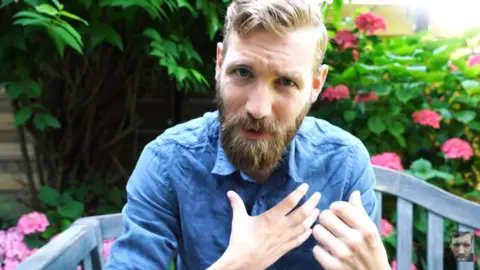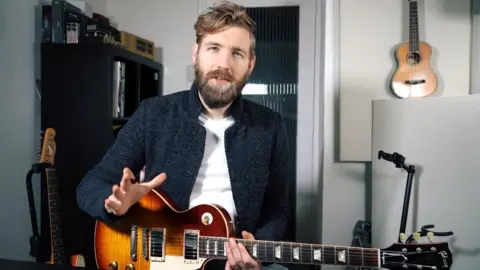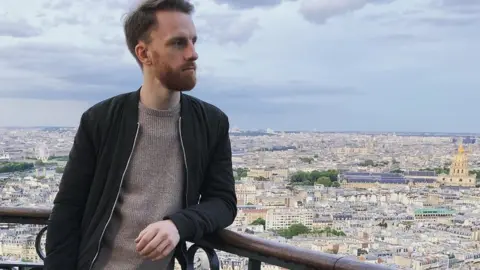YouTuber in row over copyright infringement of his own song
 Paul Davids
Paul DavidsPaul Davids thought he had seen it all when it came to YouTube's copyright protection system.
The Dutch YouTuber's most popular videos include him playing famous guitar riffs, comparing different instruments and teaching various guitar skills and techniques.
"Just like probably all the music YouTubers out there," he explained in a video to his 625,000 subscribers, "once in a while I get an email stating I'm infringing on someone's copyrighted material."
Paul had been contacted by YouTube to advise him that one of his videos had been flagged for copyright infringement, but in his own words, "this was a little different".
The copyright he had apparently infringed upon was his own.
"It said what song I was infringing on, and what I found was quite shocking," said Paul.
"Someone took my track, added vocals and guitar to make their own track, and uploaded it to YouTube, but I got the copyright infringement notice!"
Paul had been accused of plagiarising his own music - and worse, all the money that video was earning would now be directed towards the person who copied his content.

How do people make money from YouTube videos?
 Paul Davids
Paul Davids- A video can be "monetised" if a YouTube channel has at least 1,000 subscribers, and more than 4,000 hours of their content has been watched in the past 12 months
- So long as the channel fits these requirements, users can apply to join the YouTube Partner Programme and have adverts attached to their videos
- Often YouTubers will make money in other ways, through working with brands, merchandising and crowdfunding

'That's quite odd'
Despite being faced with a claim of copyright infringement and demonetisation, Paul remained calm.
"I looked up the guy on Facebook," he said. "I wrote him a message.
"I asked: 'Are you aware that you used one of my tracks to publish as your own track? Let me know'.
"A few hours later I got a response. 'Hey, I don't know', he said. 'I did download a couple of guitar licks somewhere off YouTube. Would you consider letting me still use this?'
"I wrote him back saying, 'You can't just rip a track off YouTube and then claim it is your own. Did you know I got a copyright notice from YouTube about that track? Claiming that I was infringing on your track?'
"That's quite odd, since I wrote and recorded it."
 Paul Davids
Paul DavidsIn the end, Paul decided to do the nicest thing he could think of - he let the copycat keep using his song.
"It's not like he will make tons of money with it," Paul said. "It's OK. It probably happens all the time."
The BBC has approached YouTube for comment.
You may also like:
This is not the first time there has been such an issue with YouTube's copyright systems.
In 2015, Mitch Martinez had monetisation removed from a video after Sony filed a copyright claim against the video he licensed them.
And in 2010, pop artist Justin Bieber was caught up in a row with the platform when they temporarily would not allow him to upload his new song - because someone else had uploaded it first.
Why does this keep happening?
 Steven Bridges
Steven BridgesAt the heart of the controversy is YouTube's Content ID system - the automatic process which decides whether a video contains copyright infringement.
Steven Bridges, a magician with more than 178,000 subscribers on YouTube, tells the BBC how this might have happened.
"Content ID is in place to make sure people don't use content without permission of the original creator," Steven explained.
"YouTube's systems automatically scan videos and detect if they've got, for example, a pop song in the background.
"If the video does, then the owner of the song could be notified, and they can choose whether they want the video to be left online, or whether they want to monetise the video themselves.
"It's a great system but it has its faults. For example, sometimes content can be wrongly demonetised or taken down. Certain companies can 'claim' videos if they find copyrighted material in them, regardless of whether YouTube's Content ID detected it.
"The creator has to go through an appeal process if they think it's been unjustly claimed.
"It's a complicated thing."
By Tom Gerken, BBC UGC & Social News team
